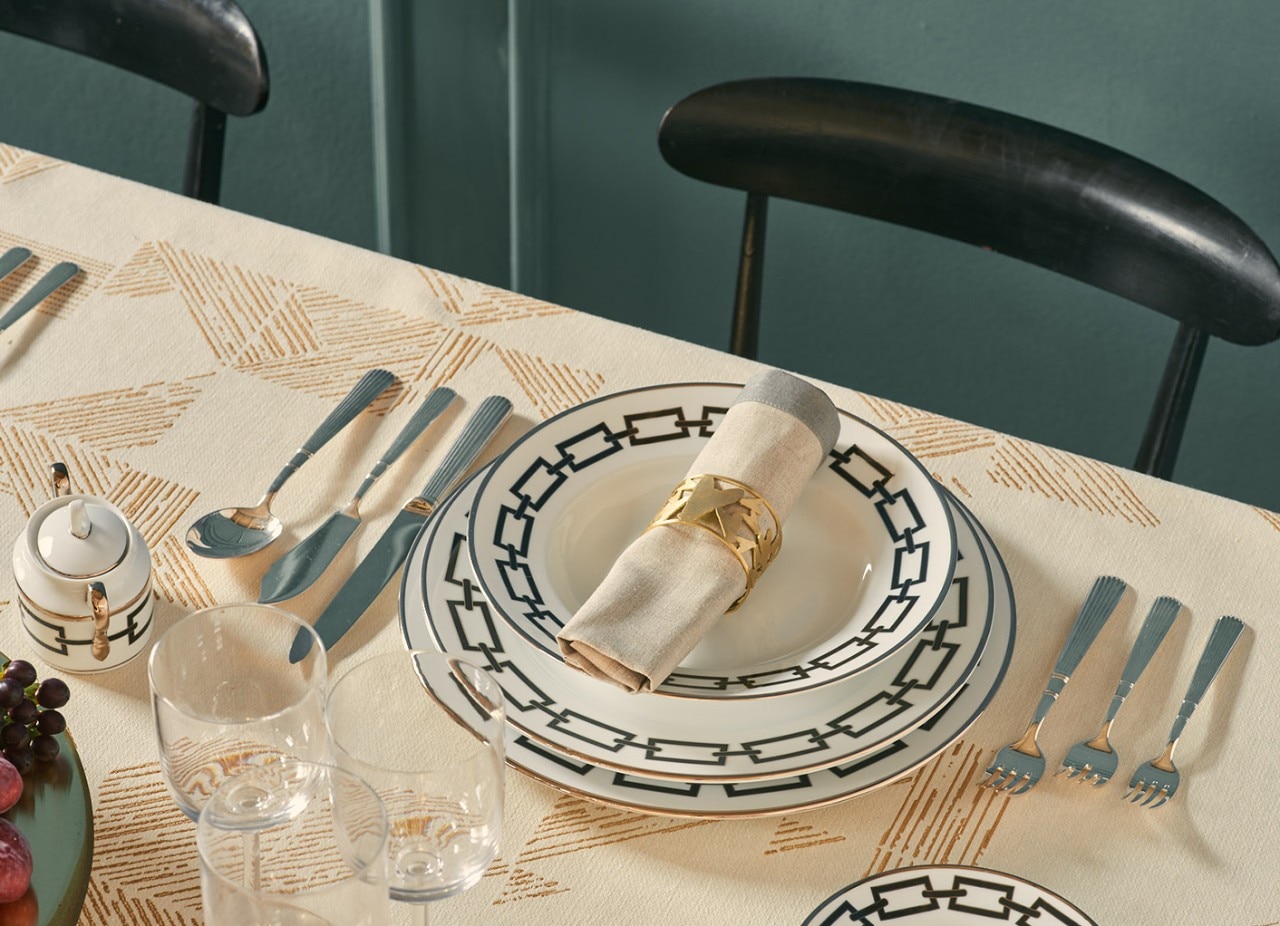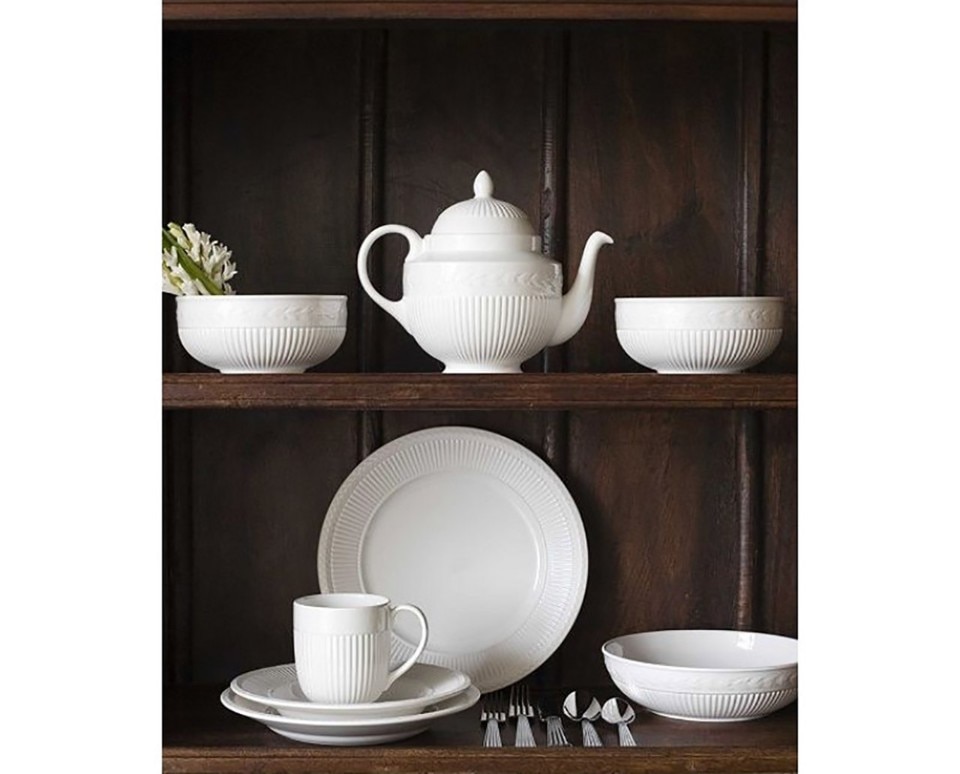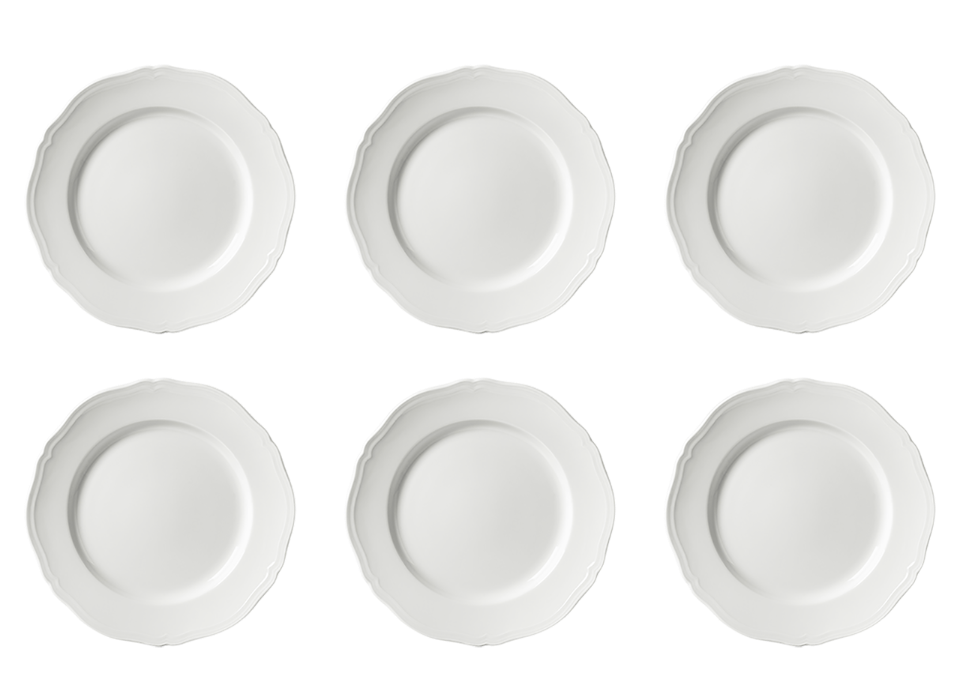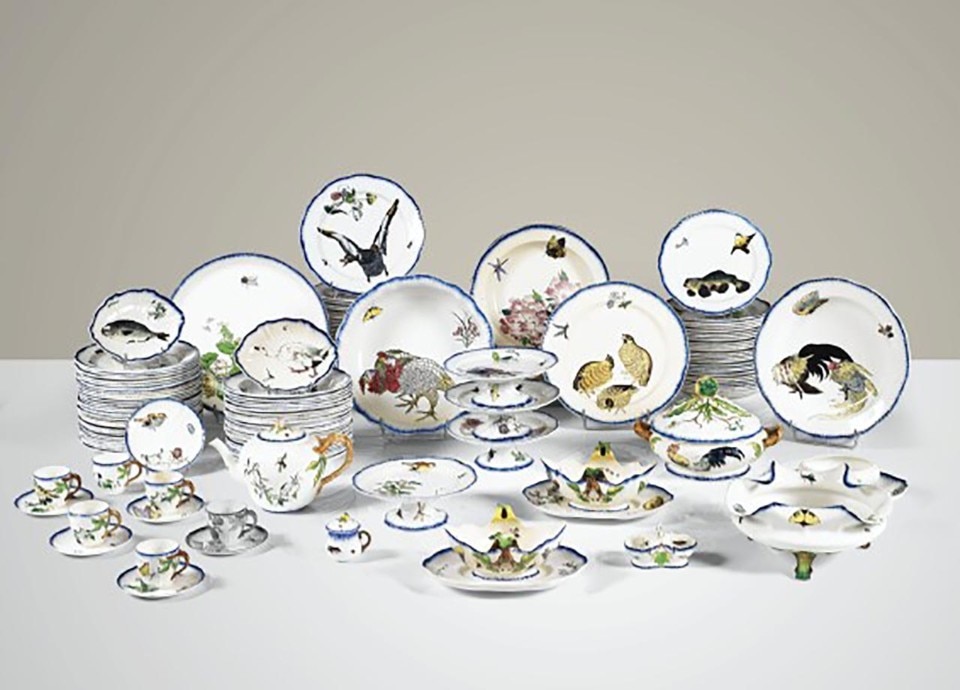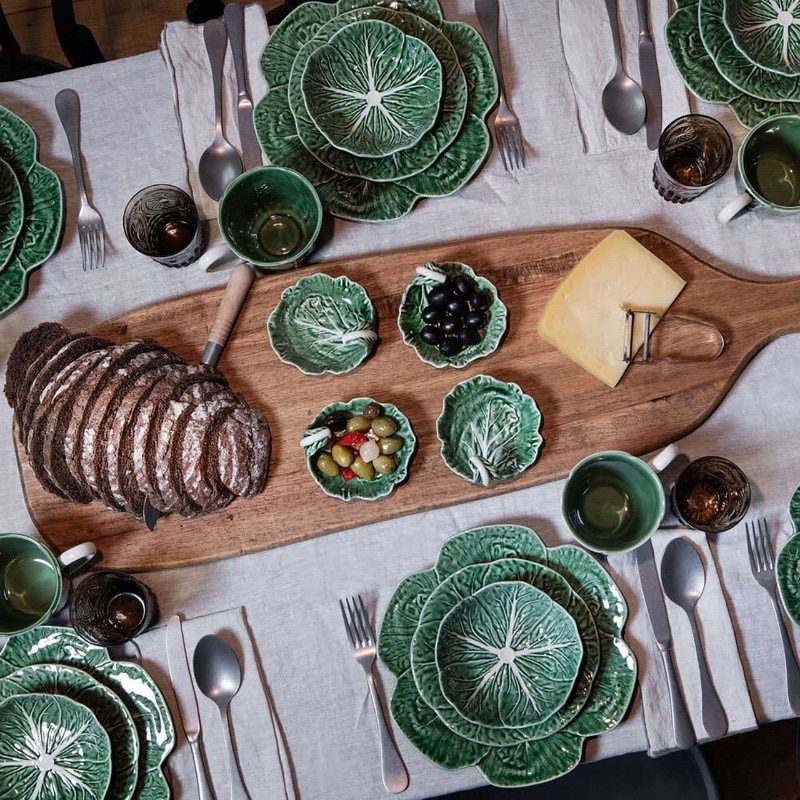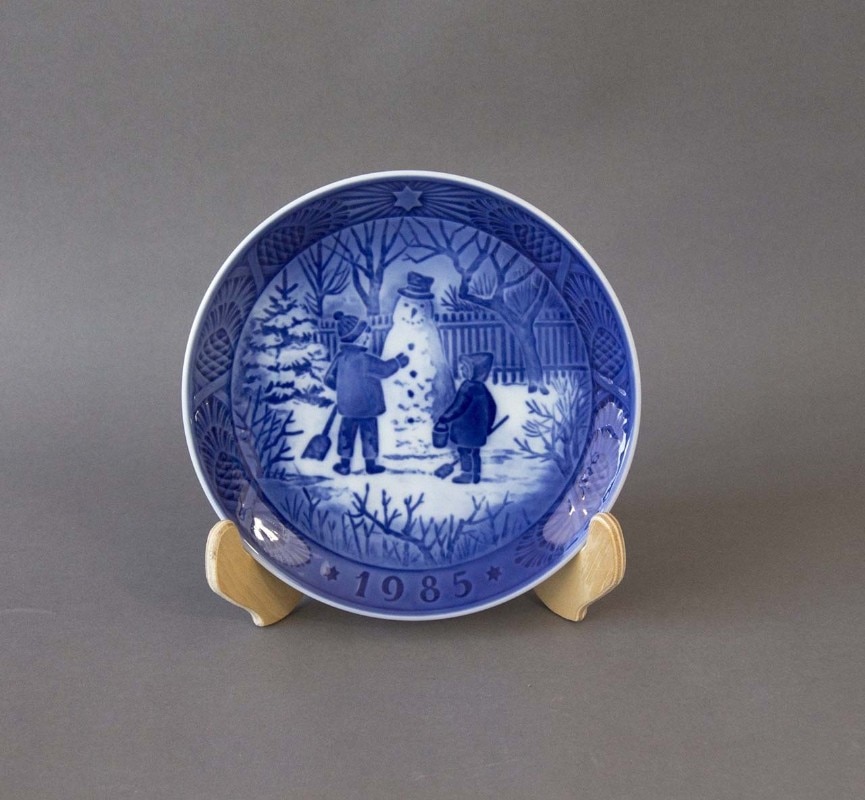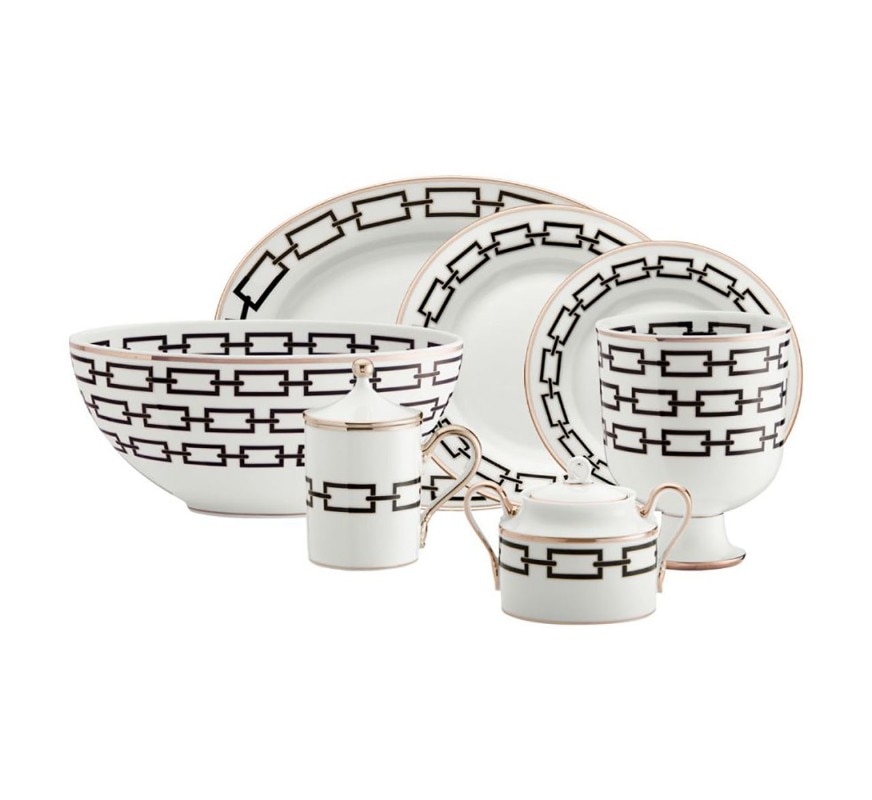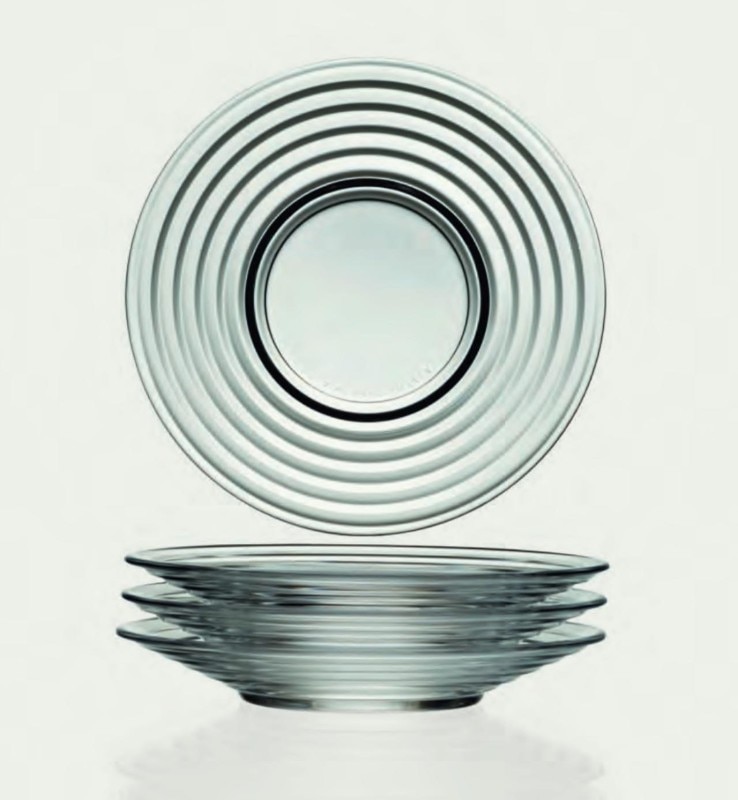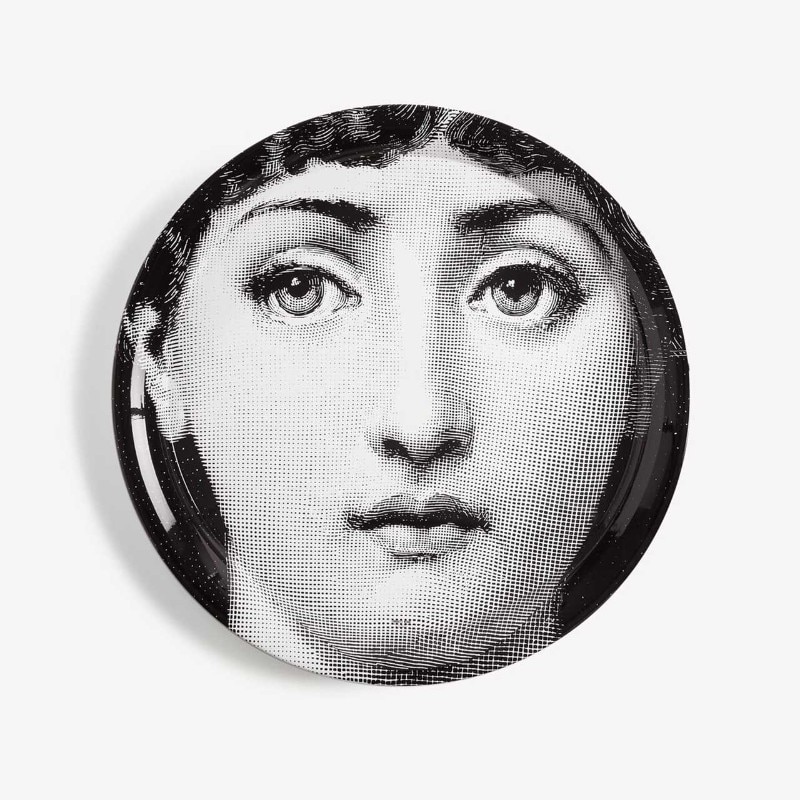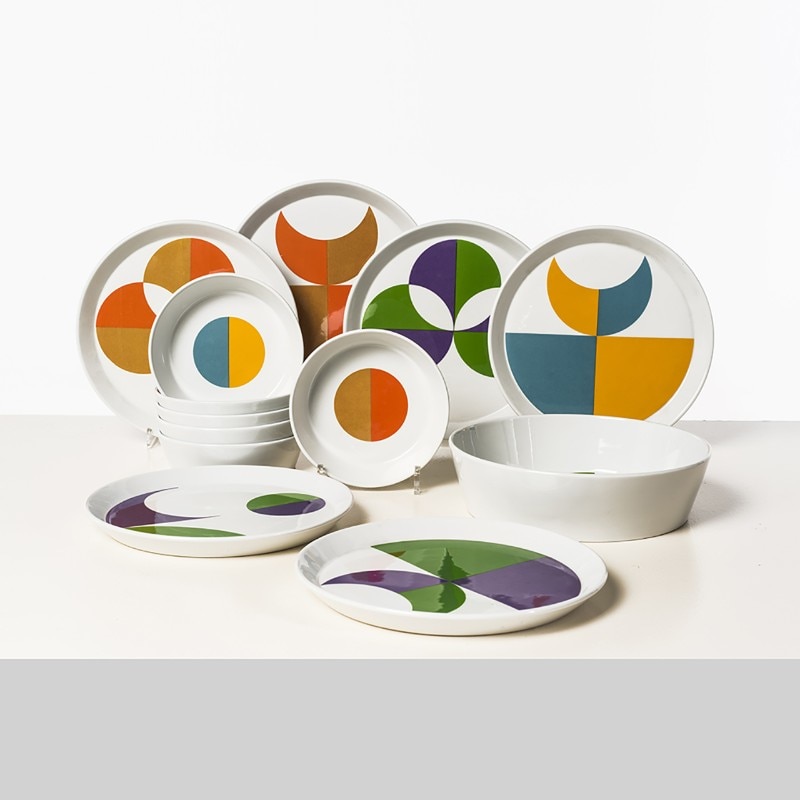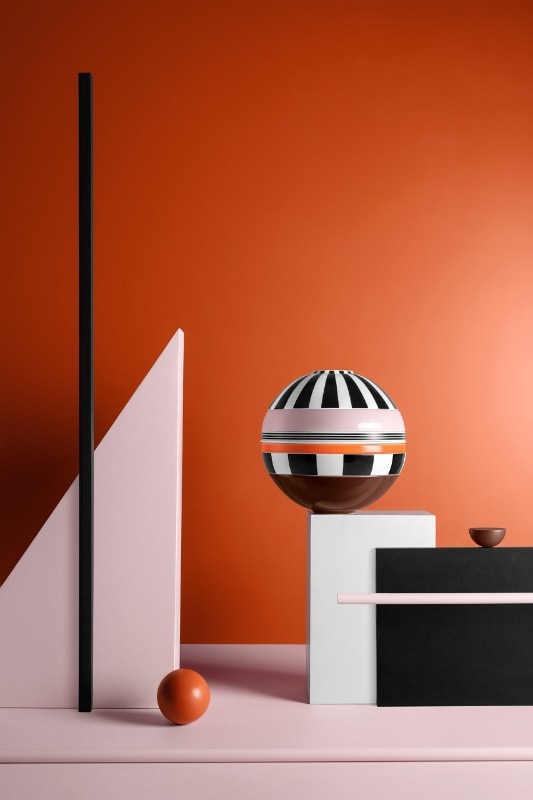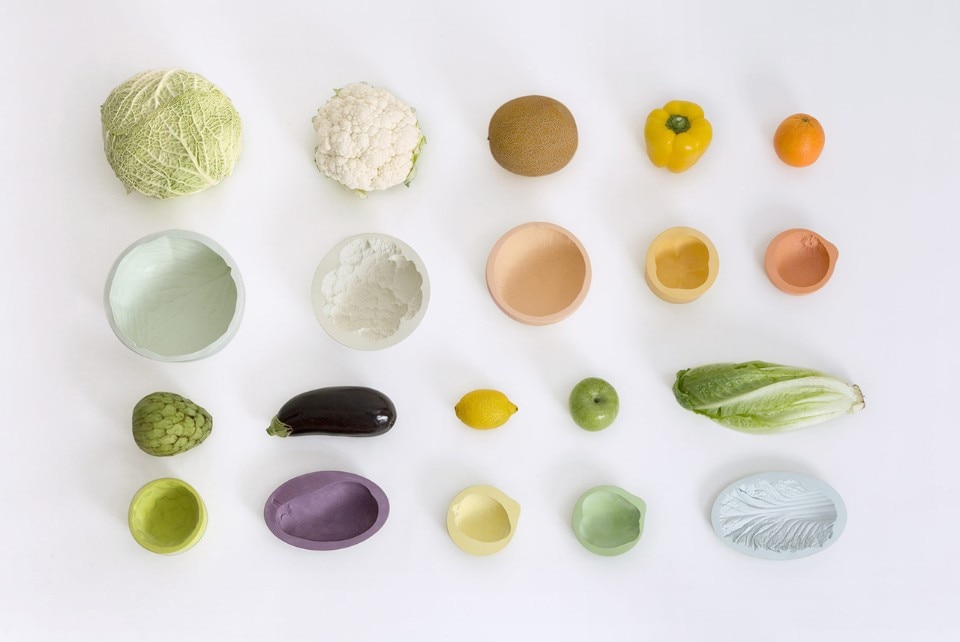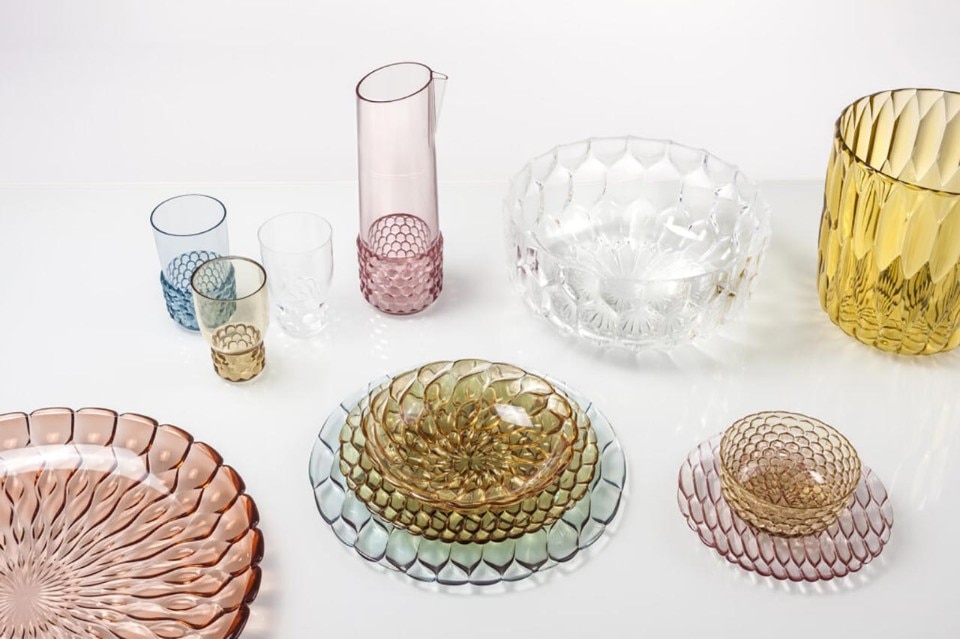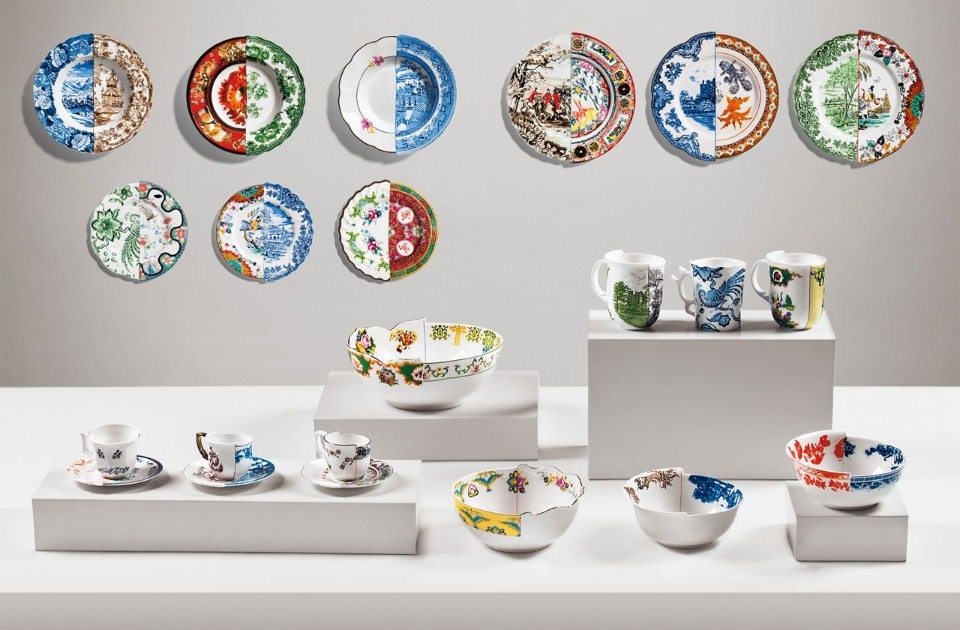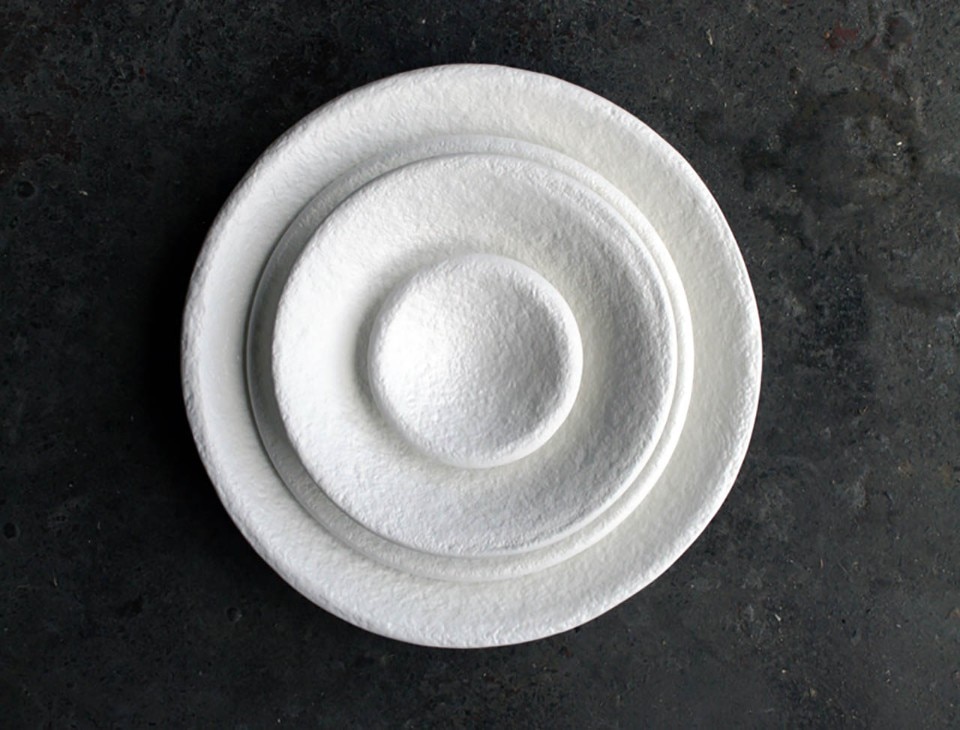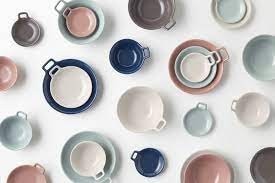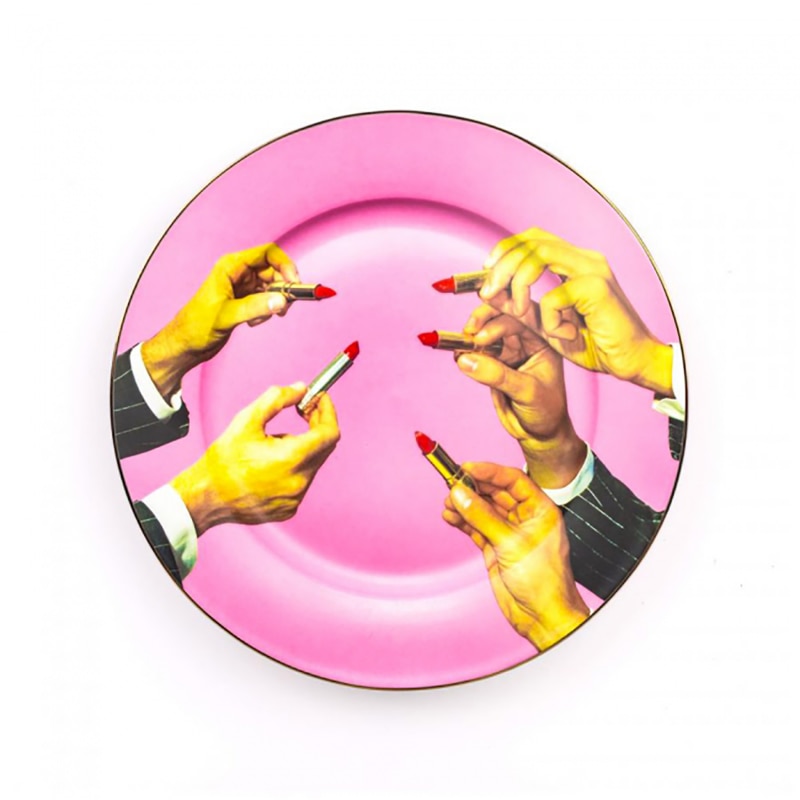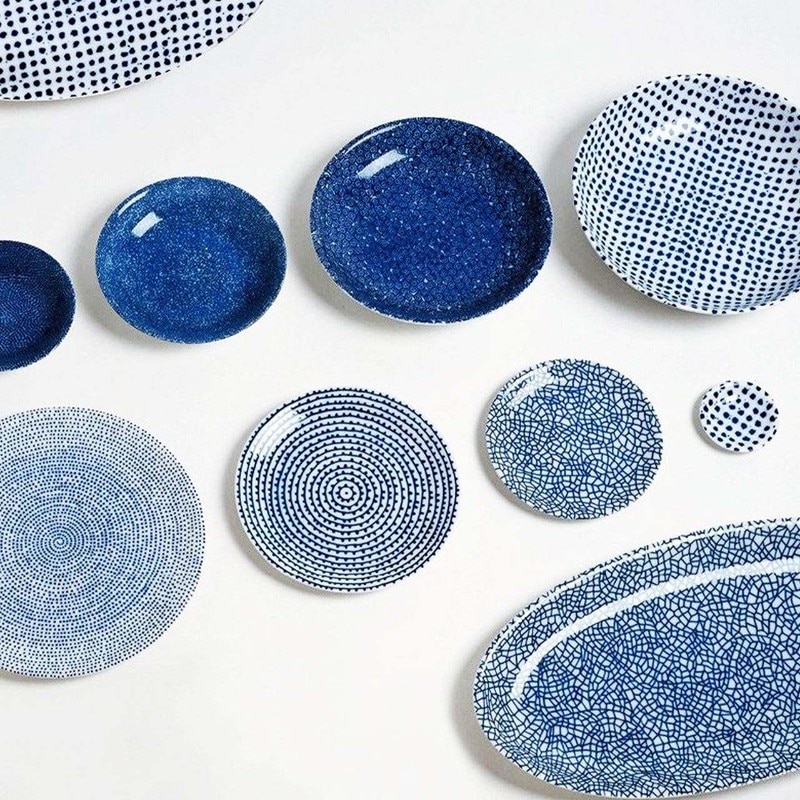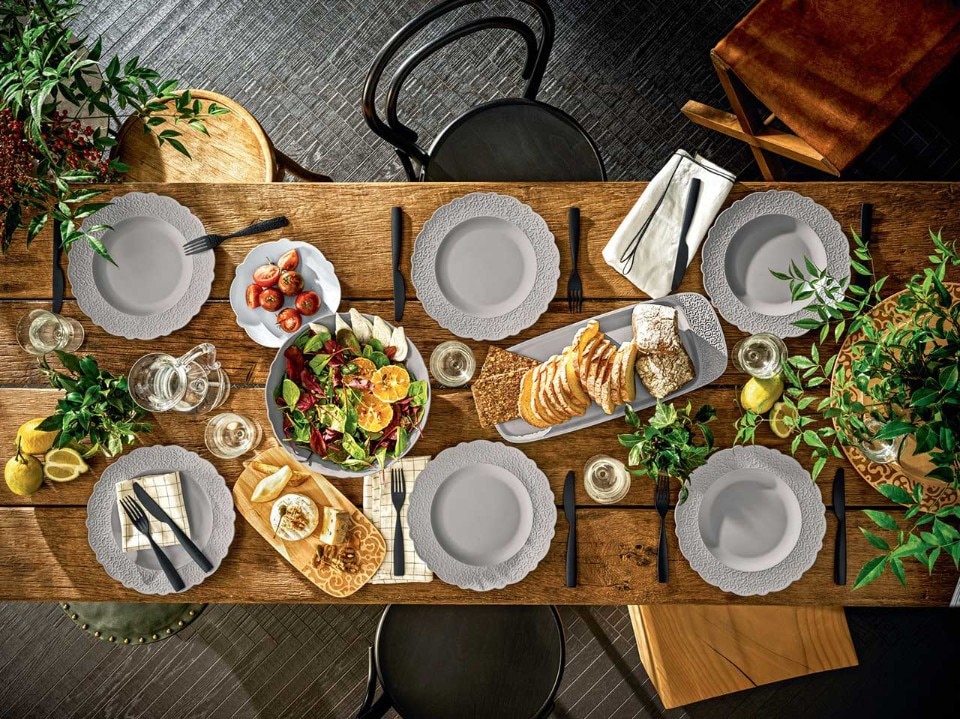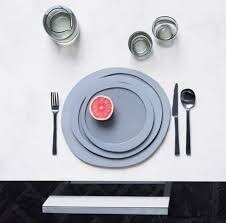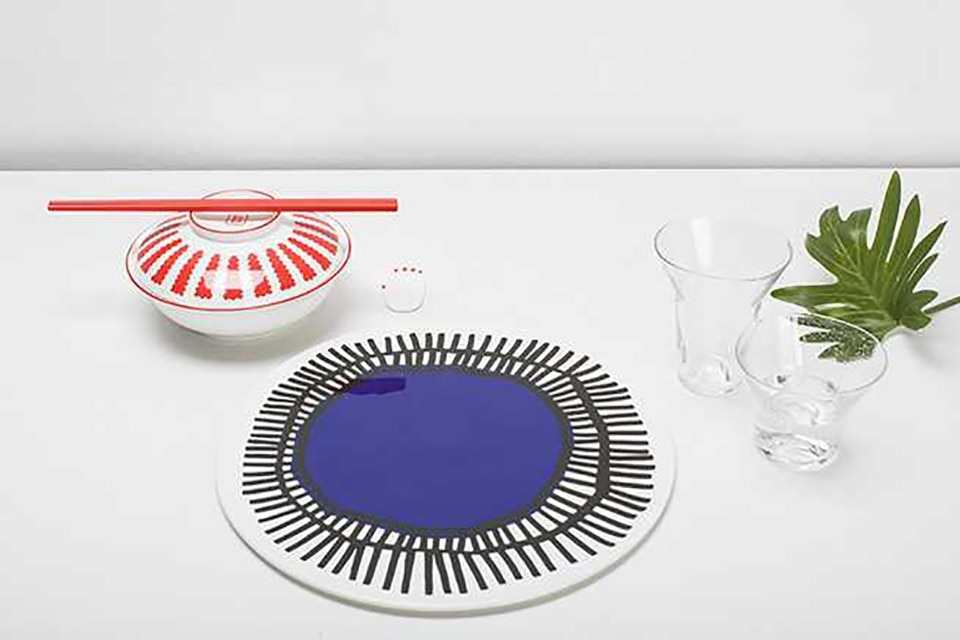The ancestor of the plate, the bowl, is not only one of the earliest human creations, but also one of those that have been used most continuously for thousands of years. Yet its appearance during the evolution of our material culture is anything but static. From cavemen to court societies, the plate is no longer defined by its singularity, but rather by a systemic perspective. Transformed into a set, it will be characterized by precise rules of etiquette and setting, and depending on its quality and decoration it will tell the story of belonging to specific social classes and countries.
The spread of the so-called service à la russe under Napoleon, led the upper classes to replace the banquet formula with a set table as we know it today. At the same time, the great porcelain factories in England, France, Germany, Denmark and Italy had already been in operation for a hundred years – the white gold was born in China around the year one thousand – mostly working under the authority of their royal households. Guardians of a priceless savoir faire, they would make specific colours and motifs the expression of their place of origin. At the same time, many regional factories, which would later establish themselves, particularly in the field of ceramics, would transform materials, techniques and decorations into a craft capital capable of identifying a territory and constituting one of the most important features of its identity.
Fertile ground for exchange with all the decorative arts, plates remain a privileged surface one can experiment on with forms, paintings and applications, and with which it is possible to make tangible an emotional heritage for those who have made the use of a specific dinnerware a daily habit extending over decades. Designers, for their part, continue to find in tableware an extraordinary stimulus for their imagination. New stimuli are offered by materials and renewed production techniques, which often consider the small series a possible format of mediation between the market and the experimentation of small studios.
We often wonder whether the world of design needs a new chair: thinking about it, the same could be said of a new plate. Betting on the possibility of innovating even the most banal objects, this predisposition of designers to reappear in the world of tableware with new projects gives us hope. Suggesting that, despite their longevity, new ideas may continue to amaze us, renewing the bond we have with them.
Opening image courtesy Ginori 1735.


